Prompt engineering is becoming a key skill in today’s world of artificial intelligence (AI) and machine learning (ML). Even if you’re a developer, a writer, or a creative person using AI to generate art, prompt engineering helps you get better results from AI models. By crafting clear, specific prompts, you can guide AI to respond the way you want. This article will introduce you to 9 essential tools to boost your prompt engineering skills.
Introduction to AI Prompt Engineering
AI prompt engineering is like giving instructions to an AI system so it can give you accurate answers. Imagine giving directions to a friend, if you’re clear, they’ll get to the right place. If not, they might end up somewhere else! The same thing happens when you work with AI. If your instructions (prompts) are vague, the AI won’t know what you want and might give you an unhelpful response. Good prompt engineering is about making those instructions as clear as possible to get the best outcome.
For example, if you’re using AI to generate text or create images, the clearer your question, the better the result. With well-designed prompts, the AI can better understand what you’re asking for and give you exactly what you need.
In practice, this involves carefully choosing your words, specifying the format, or even adding context. As AI models like GPT-4, Claude, or DALL-E grow more complex, knowing how to communicate with them through prompts is becoming an essential skill.
For instance, platforms like USnap provide easy access to multiple AI models, allowing you to experiment and fine-tune prompts efficiently across various AI systems.
Why You Should Use AI Prompt Engineering Tools
You may wonder why tools are needed for something as straightforward as writing instructions. Well, these tools can significantly improve the way you interact with AI, making the whole process more efficient and helping you get better results. Here’s why they’re useful:
- Save Time and Effort: Writing the perfect prompt often takes a bit of trial and error. Tools can make this process faster and easier, allowing you to get the right response on your first try.
- Boost Creativity and Output Quality: With well-crafted prompts, AI can produce higher-quality content, whether it’s text, images, or problem-solving.
- Learn and Grow: These tools also teach you how AI interprets different types of prompts, which is helpful as AI continues to evolve and become more embedded in everyday tasks.
- Adapt to Different AI Models: Not all AI systems are the same. Some respond better to specific types of prompts. Prompt engineering tools can help you tailor your prompts for different AI models, making them more versatile.
Now, let’s look at the top 9 AI prompt engineering tools that can help you level up your skills.
1. PromptPerfect
PromptPerfect is an excellent tool for optimizing the quality of your prompts. Whether you’re working with text-based AI models like GPT-4 or other large language models (LLMs), this tool helps you refine your prompts to get consistent, high-quality results.
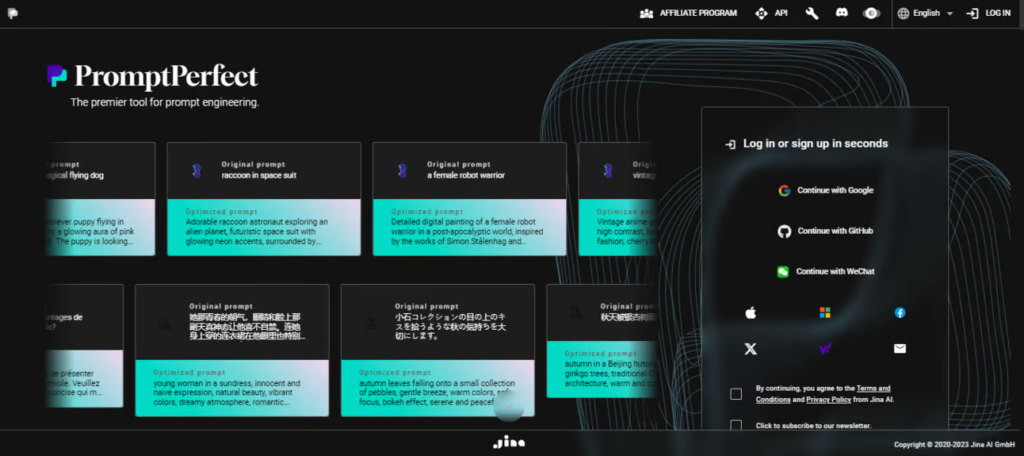
- Prompt Optimization: Adjust prompt length and style to get more accurate responses.
- API Access: Developers can use this tool’s API to integrate optimized prompts into their applications.
- Credit-Based System: You only pay for what you use, making it a flexible option for different budgets.
PromptPerfect is a go-to for developers and AI enthusiasts who want to ensure their prompts consistently deliver the best results.
2. PromptAppGPT
If you’re looking for a simple way to create prompts, PromptAppGPT might be the tool for you. It uses a low-code framework to make the process easier, perfect for beginners or anyone who wants a quick and efficient solution.

- Low-Code Development: You don’t need advanced programming skills to use this tool.
- Online Prompt Tools: Includes a prompt editor and runner to test your prompts before deploying them.
This tool is ideal for anyone looking to speed up their prompt development process and fine-tune how they interact with AI.
3. LangChain
LangChain is a more advanced framework for people who want to create prompts that rely on context. This means you can give the AI more background information to help it generate better responses.
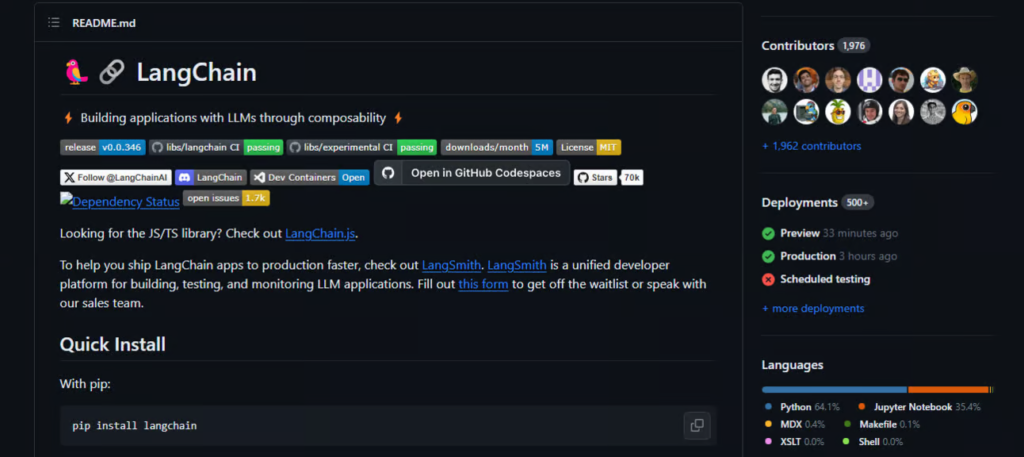
- Context-Aware Applications: This tool allows you to create prompts that take into account previous responses or specific context.
- Reasoning Capability: You can create prompts that encourage the AI to reason and think critically.
LangChain is great for those who need their AI models to handle more complex, multi-step tasks.
4. PromptSource
For researchers and developers working with natural language processing (NLP), PromptSource is an incredibly useful tool. It provides a vast library of pre-made prompts that you can use or modify to suit your needs.
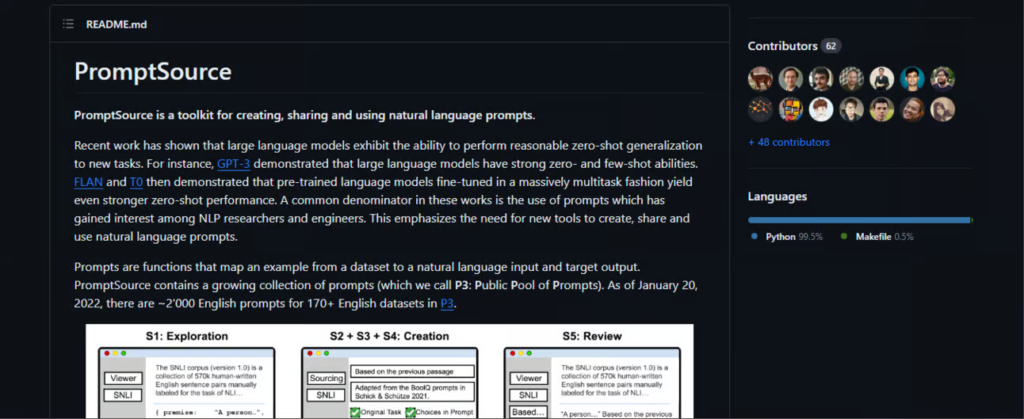
- Expansive Prompt Collection: With over 2,000 prompts available, this tool is rich with options for different NLP tasks.
- Interactive Interface: Easy to use, even if you’re not an expert.
PromptSource is ideal for anyone working on NLP projects who wants access to a large, community-driven prompt library.
5. PromptoMania – Prompt Builder
If you’re an artist interested in AI-generated art, PromptoMania will be a great tool to explore. It allows you to create detailed prompts for generating art through various AI models like MidJourney and DALL-E 3.
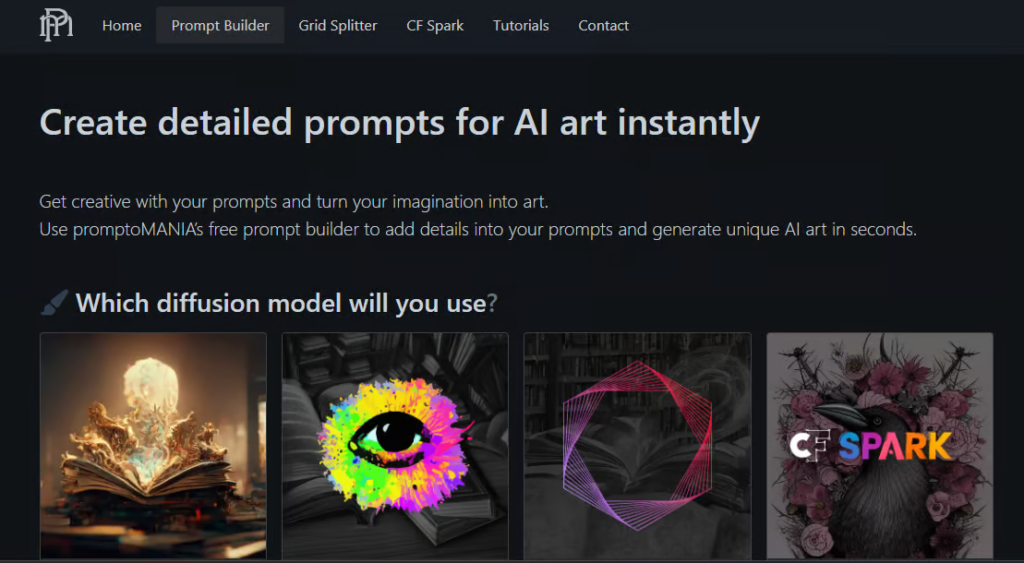
- Broad Model Compatibility: Works with many popular diffusion models for AI art.
- Creative Freedom: Offers a range of options to customize prompts and get unique art results.
This tool is perfect for anyone looking to dive into the creative side of AI with art generation.
6. Promptmetheus
Promptmetheus is like an all-in-one tool for advanced users looking to take their prompt engineering to the next level. It allows you to integrate AI into your apps and workflows with ease.
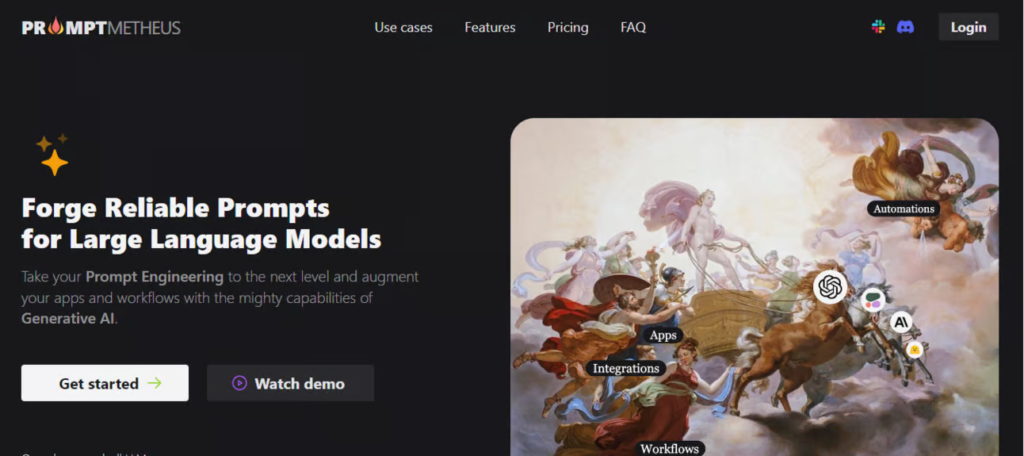
- Integration and Optimization: Test and optimize prompts directly in your applications.
- Real-Time Collaboration: Work with others to refine and improve prompts.
This tool is ideal for developers and professionals who want to build robust AI-powered applications.
7. PromptGen
PromptGen is another great tool for AI-generated art. It offers a structured way to build prompts, helping you add elements piece by piece.
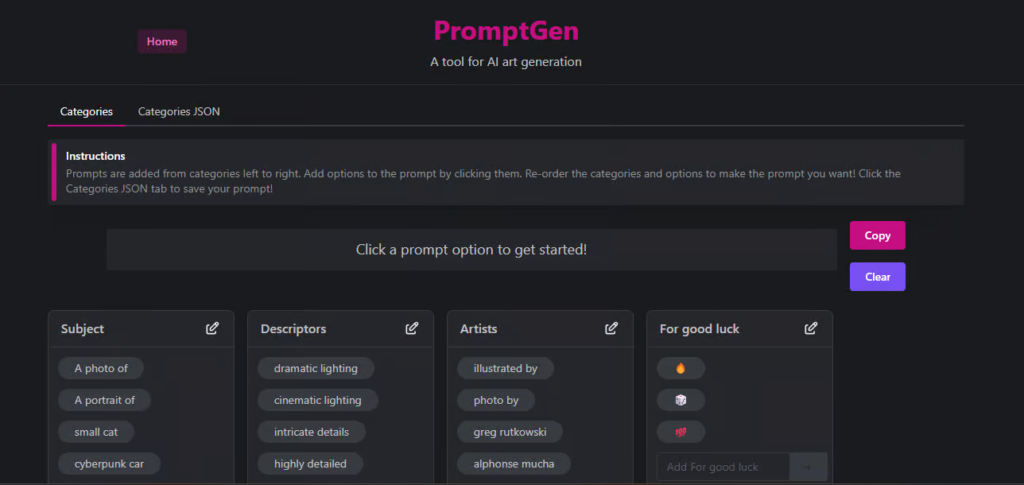
- Category-Based Prompt Addition: You can add elements from different categories to build a custom prompt.
- Save and Reuse Prompts: Save your best prompts for future projects.
This tool is simple yet effective for users who want more control over their creative prompts for AI art.
8. AI Text Prompt Generator
AI Text Prompt Generator is a straightforward tool for creating text-based prompts, ideal for writers and content creators.
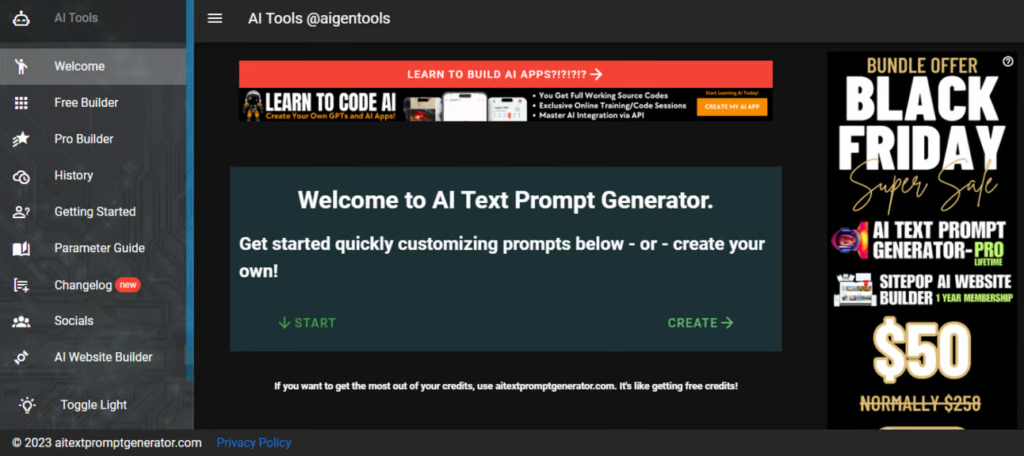
- Customization and Flexibility: You can reorder categories and options to tailor the prompt.
- Save and Reuse: Like other tools, it lets you save prompts for future use.
This tool is great for anyone who wants to generate AI-written content quickly and efficiently.
9. Agenta
Last but not least, Agenta is an open-source platform for experimenting with large language models (LLMs). It’s perfect for users who want to fine-tune their prompts and improve AI interactions over time.
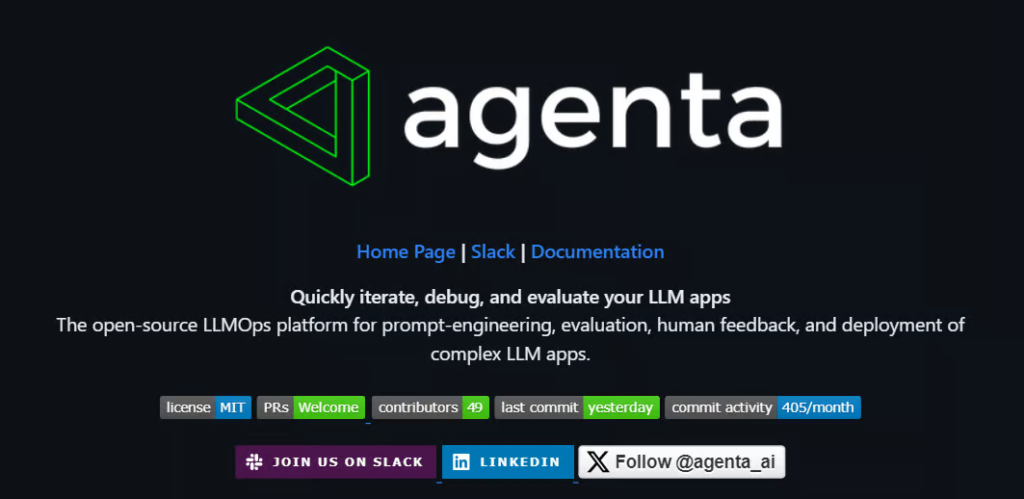
- Iterative Testing: Test and refine prompts continuously to get the best results.
- Collaboration: Work with others and deploy your prompts as APIs for easy integration.
Agenta is ideal for advanced users who need a flexible, customizable solution for prompt engineering.
Conclusion
As more industries begin to rely on AI, mastering prompt engineering will become a vital part of working efficiently with AI models. Tools like those mentioned in this article are designed to help users create better, more effective prompts tailored to various AI systems. Even if you’re new to AI or an experienced professional, these tools can help you get the most out of your AI interactions.
Besides, plarforms like USnap also make it easier to manage and optimize your prompt engineering process by offering a wide range of AI models in one place. This versatility allows you to experiment and fine-tune your prompts across different models, helping you become more skilled and efficient in using AI for various tasks. As AI tools continue to evolve, having access to platforms like USnap can give you a significant advantage in leveraging AI’s full potential.
